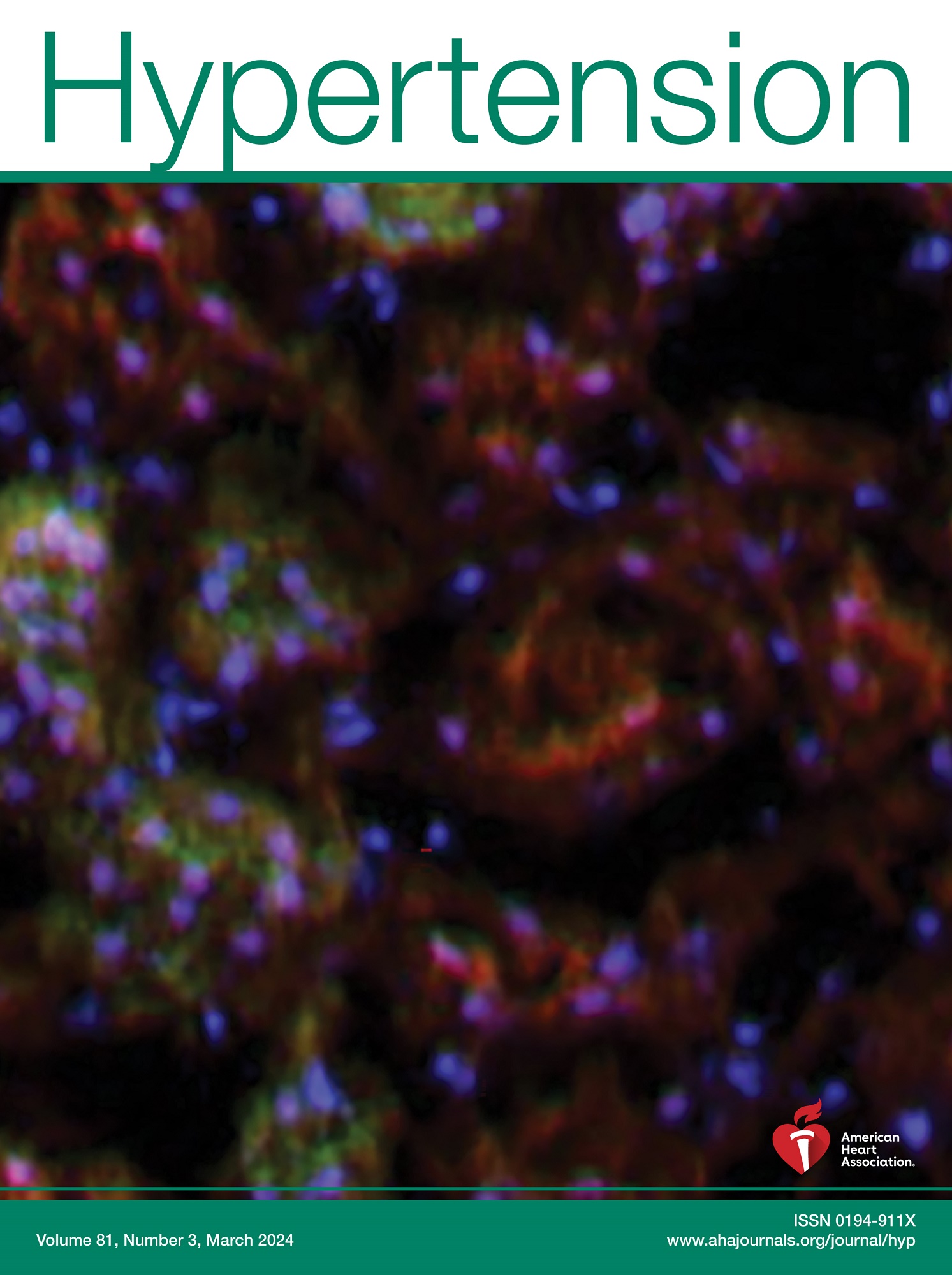收缩压放大:系统评价和个体参与者荟萃分析。
IF 8.2
1区 医学
Q1 PERIPHERAL VASCULAR DISEASE
引用次数: 0
摘要
收缩压(SBP)放大是一种生理现象,与主动脉和肱动脉之间的压差水平有关,并与袖带血压(BP)测量不准确有关。然而,对有创测量的主动脉-肱收缩压放大水平的了解是有限的。本研究旨在探讨这一点,以及对高血压分类的预期影响。方法系统回顾和个体参与者数据荟萃分析确定了1151名参与者(62±12岁,72%男性)记录的有创肱动脉和主动脉血压。收缩压放大计算为肱收缩压减去主动脉收缩压。高血压分类(根据先前描述的肱动脉和主动脉血压阈值定义)在主动脉和肱动脉血压测量之间进行比较。结果收缩压扩增范围广,男女相似(分别为平均值±SD、8±9 mm Hg和7±10 mm Hg),且随年龄增长而降低。17.4%的患者存在高收缩压扩增(bb0 ~ 15mm Hg)(男性16.8%,女性19.5%;P=0.44), 37.3%的参与者存在低收缩压扩增(<5 mm Hg)(男性,37.2% vs女性,37.4%;P = 0.95)。基于肱动脉压和主动脉压的高血压分类的总体一致性水平为中等(κ, 0.67;P < 0.001;协议,87.4%)。在高血压分类中,最佳、高血压前期和高血压分类的一致性分别为65.0%、38.1%和92.7%。结论男女主动脉-肱收缩压扩增存在较大差异。基于肱动脉压和主动脉压的高血压分类存在主要的理论差异。这些知识可能有助于改进袖带血压测量精度的创新。本文章由计算机程序翻译,如有差异,请以英文原文为准。
Systolic BP Amplification: Systematic Review and Individual Participant Meta-Analysis.
BACKGROUND
Systolic blood pressure (SBP) amplification is a physiological phenomenon related to the level of pressure difference between the aorta and brachial artery and is associated with cuff blood pressure (BP) measurement inaccuracy. However, knowledge on the invasively measured level of aortic-to-brachial SBP amplification is limited. This study aimed to explore this, as well as anticipated effects on hypertension classification.
METHODS
A systematic review and individual participant data meta-analysis identified invasive brachial and aortic BP recorded in 1151 participants (62±12 years, 72% male). SBP amplification was calculated as brachial SBP minus aortic SBP. Hypertension classification (defined according to previously described thresholds for brachial and aortic BP) was compared between the aortic and brachial BP measures.
RESULTS
There was a wide range of SBP amplification, which was similar between male and female (mean±SD, 8±9 mm Hg and 7±10 mm Hg, respectively) and decreased with increasing age. High SBP amplification (>15 mm Hg) was observed in 17.4% (male, 16.8% versus female, 19.5%; P=0.44), and low SBP amplification (<5 mm Hg) in 37.3% of participants (male, 37.2% versus female, 37.4%; P=0.95). The overall level of agreement between hypertension classification based on brachial and aortic BP was moderate (κ, 0.67; P<0.001; agreement, 87.4%). Agreement in hypertension classification was 65.0%, 38.1%, and 92.7% across classifications of optimal, prehypertension, and hypertension, respectively.
CONCLUSIONS
In males and females there is wide variability in aortic-to-brachial SBP amplification. There were major theoretical differences in hypertension classification based on brachial versus aortic BP. This knowledge may help toward innovations for improving cuff BP measurement accuracy.
求助全文
通过发布文献求助,成功后即可免费获取论文全文。
去求助
来源期刊

Hypertension
医学-外周血管病
CiteScore
15.90
自引率
4.80%
发文量
1006
审稿时长
1 months
期刊介绍:
Hypertension presents top-tier articles on high blood pressure in each monthly release. These articles delve into basic science, clinical treatment, and prevention of hypertension and associated cardiovascular, metabolic, and renal conditions. Renowned for their lasting significance, these papers contribute to advancing our understanding and management of hypertension-related issues.
 求助内容:
求助内容: 应助结果提醒方式:
应助结果提醒方式:


